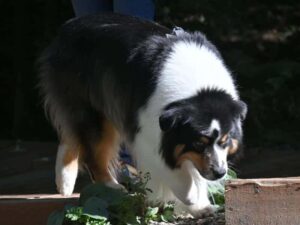
Bristle Nose Scent Work Club of Utah | Salt Lake City, UT
Scent Work Trial photos from the Bristle Nose Scent Work Club of Utah, which was held on September 22 – 24, 2023, at the Salt Lake, Utah.

Home » Dog Sports » Scent Work Dog Sport
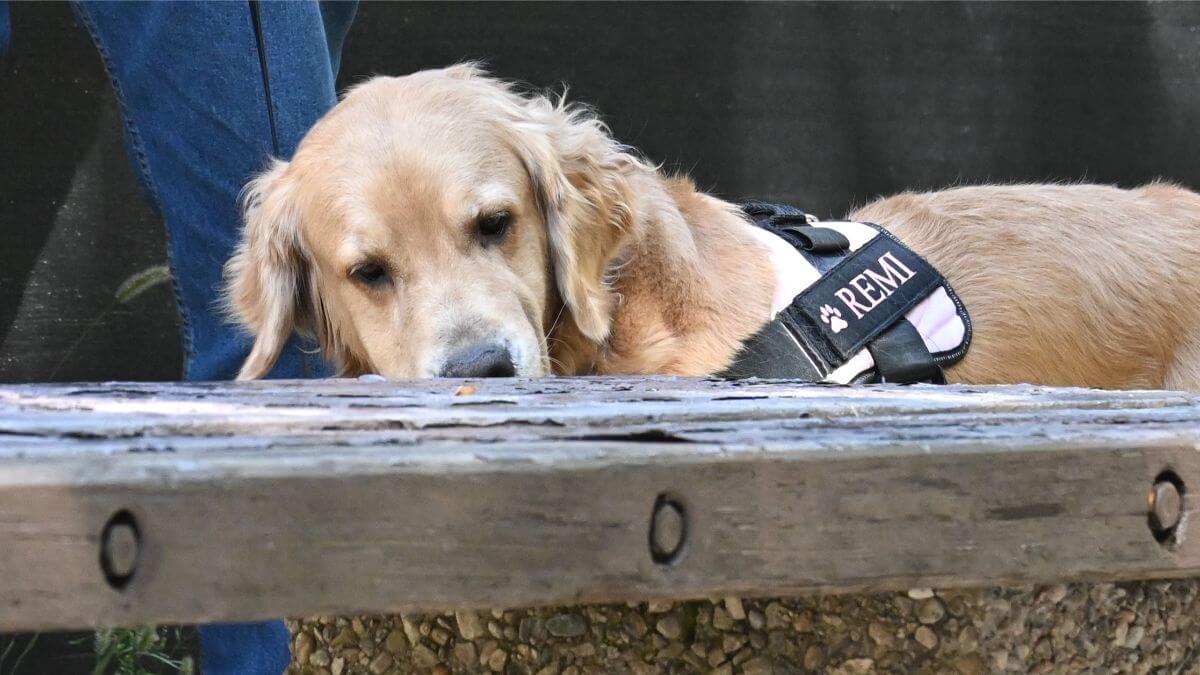
Scent Work, also known as Nose Work, is a fascinating and increasingly popular dog sport that taps into a dog’s natural instinct to hunt and track scents. Originally inspired by the training techniques of working detection dogs, Scent Work is designed to engage and develop the incredible olfactory abilities of dogs, turning scent detection into a fun, rewarding game.
At its core, Scent Work is about harnessing and nurturing a dog’s innate scenting skills. In this sport, dogs are encouraged to sniff out specific odors, often hidden in a variety of unique locations. Unlike many other dog sports that require speed and agility, Scent Work emphasizes mental stimulation and teamwork between the dog and handler. It is accessible and enjoyable for dogs four months of age and older as well as dogs of any breed, mixed breed, and physical ability, thus making it a wonderfully inclusive activity.
Participating in Scent Work provides numerous benefits for dogs. It offers mental stimulation, which is as crucial for a dog’s well-being as physical exercise. This sport helps to build confidence, especially in shy or anxious dogs, as they learn to trust their noses and decision-making skills. It also allows dogs to engage in an activity that is both natural and rewarding, often leading to a calmer, more satisfied canine companion.
For handlers, Scent Work presents an extraordinary opportunity to bond with their dogs. It requires patience, observation, and an understanding of canine behavior. Handlers learn to read their dog’s body language and signals, deepening the connection between them. This aspect of teamwork and mutual trust is a unique and fulfilling element of Scent Work.
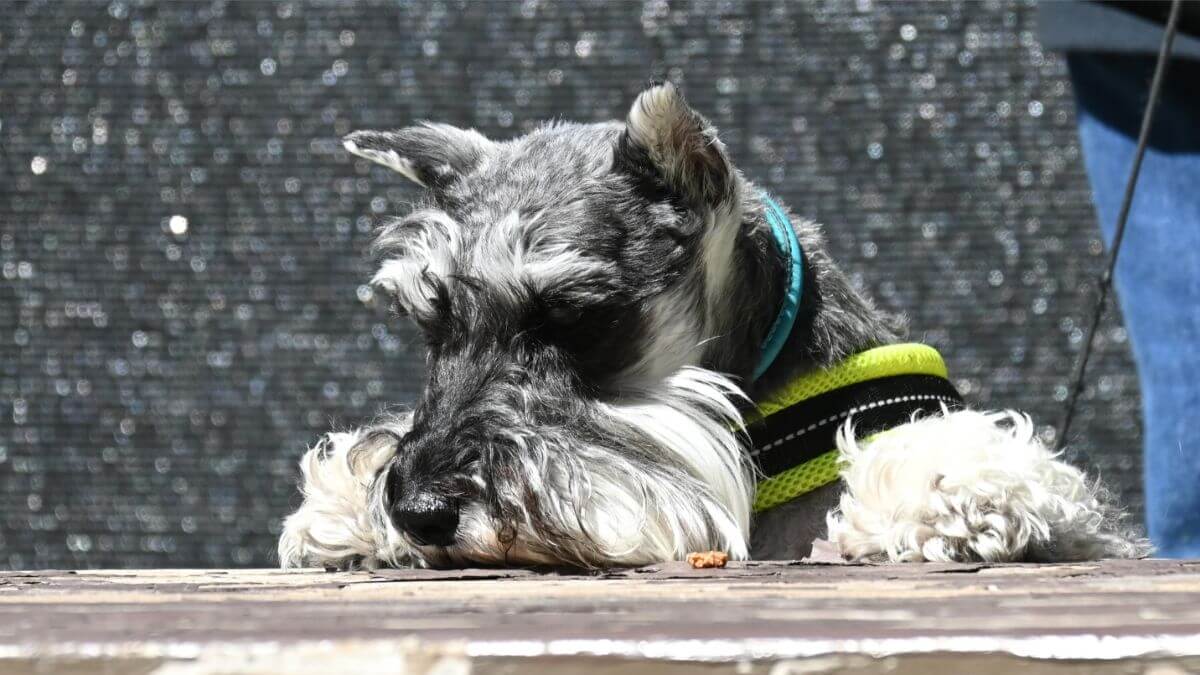
Scent Work is rooted in the primal instinct of dogs to hunt and track using their sense of smell. Historically, dogs have been valued as companions for hunting and tracking due to their exceptional olfactory abilities. Over centuries, this natural inclination has been honed and refined for various purposes, including hunting, search and rescue, and law enforcement.
The formalization of Scent Work as a sport is a relatively recent development. It began to take shape as trainers and canine enthusiasts recognized the potential for turning these natural abilities into a structured, competitive, and fun activity. The sport was inspired by the training techniques used for working detection dogs, particularly those in law enforcement and search and rescue operations. By adapting these techniques for domestic dogs, Scent Work became accessible to a wider audience, allowing more dog owners to engage in this mentally stimulating activity with their pets.
As Scent Work gained popularity, it saw significant growth and recognition. Kennel clubs and canine organizations around the world began to formalize rules and host competitions. This recognition helped in establishing Scent Work as a legitimate sport, one that is complete with standardized guidelines, titles, and competitive events. It also opened the door for more research into canine olfaction and behavior, enhancing our understanding of how dogs perceive and interact with the world.
Today, Scent Work enjoys a robust following, with clubs, organizations, and events dedicated to the sport globally. It attracts a diverse range of participants, from casual enthusiasts to competitive handlers. Modern Scent Work not only serves as a sport but also as a valuable tool for enhancing the bond between dogs and their owners. It provides an outlet for dogs to use their natural skills in a controlled, safe, and rewarding environment.
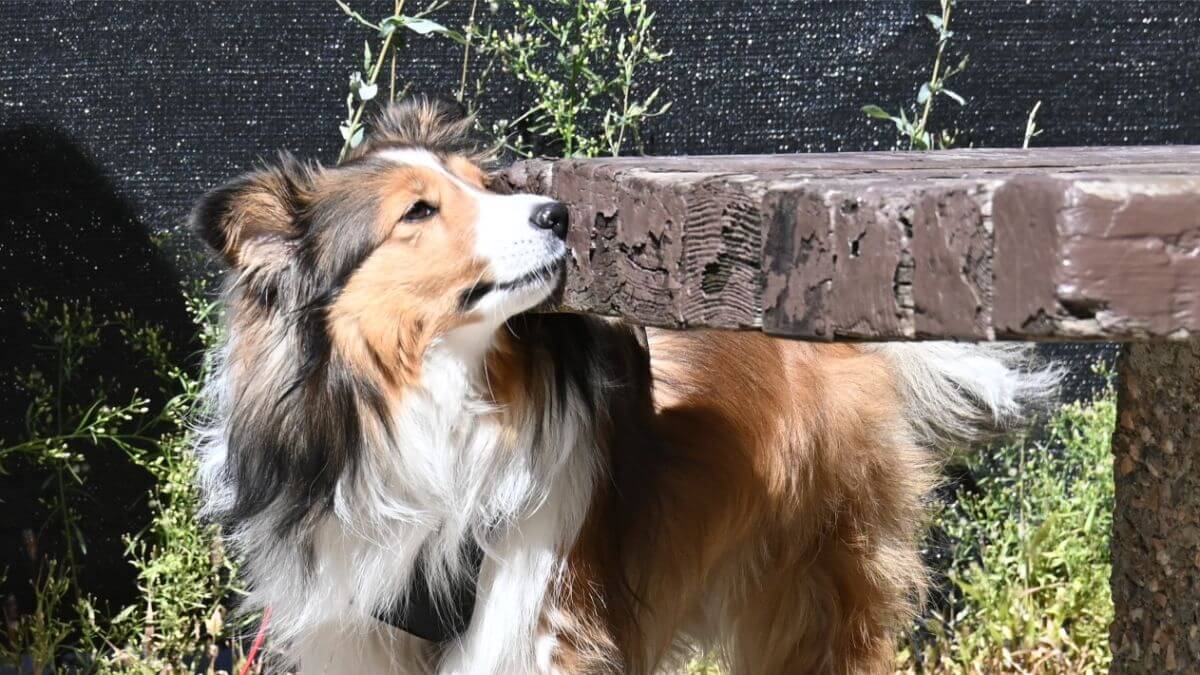
The growth and popularity of Scent Work have led to the emergence of various organizations dedicated to this fascinating sport. These associations play a crucial role in standardizing practices, hosting events, and promoting Scent Work at different levels.
Training for Scent Work begins with the basics, where the initial focus is on familiarizing dogs with the concept of searching for a specific scent. This foundational stage often involves simple, engaging games that encourage the dog to use its nose actively. The early phase of training is as much about building confidence and interest in the dog as it is about learning the actual skills. A crucial aspect here is the use of rewards – treats, praise, or toys – which serve to reinforce successful scent detection and make the process enjoyable.
As training progresses, the development of core skills takes precedence. A key skill in Scent Work is scent discrimination, where dogs learn to distinguish between different scents. Training typically starts with introducing one target odor and gradually increases in complexity, adding more scents over time. Alongside scent discrimination, there’s also an expansion of the search area. The dogs are gradually introduced to larger and more complex environments, challenging their skills in various scenarios and settings.
Advanced training techniques are crucial for handlers and dogs preparing for competitive Scent Work. This involves teaching handlers how to effectively read their dog’s signals as well as understanding how to plan search strategies for different competition scenarios. Another vital aspect of advanced training is preparing dogs to work under distraction and pressure, a common scenario in competitive environments.
The choice and use of training supplies and kits are essential elements in Scent Work training. Basic supplies typically include target odors, scent containers, and reward items. As handlers and dogs become more advanced, the training equipment becomes more specialized, incorporating items like scent wheels and multiple hide containers. There is also an evolution from homemade kits to professional-grade equipment as teams delve deeper into the sport, seeking greater challenges and complexity.
Above all, keeping training positive and enjoyable is paramount. The cornerstone of Scent Work training is positive reinforcement, ensuring that dogs associate Scent Work with positive experiences. An understanding and respect for each dog’s learning pace and style are also crucial. This approach helps in maintaining the dog’s enthusiasm and interest in Scent Work, which is essential for both their enjoyment and success in the sport.
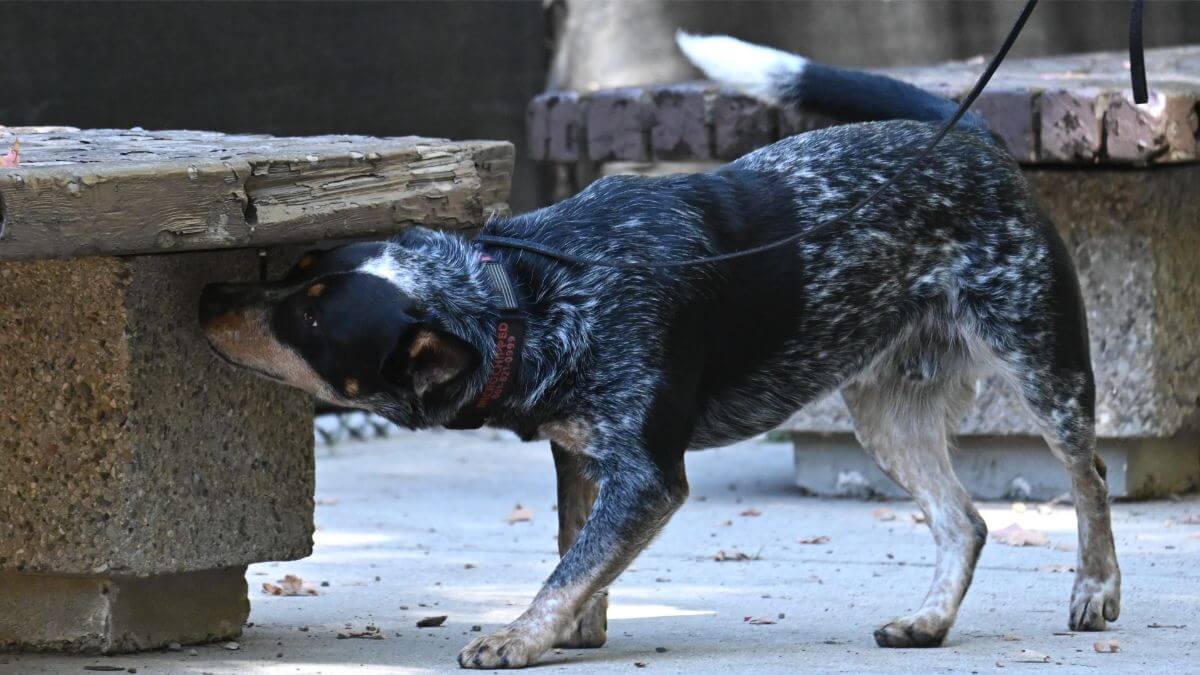
Having the right equipment and supplies is essential for effective Scent Work training and competition. This section details the necessary items and considerations for selecting and maintaining Scent Work gear.
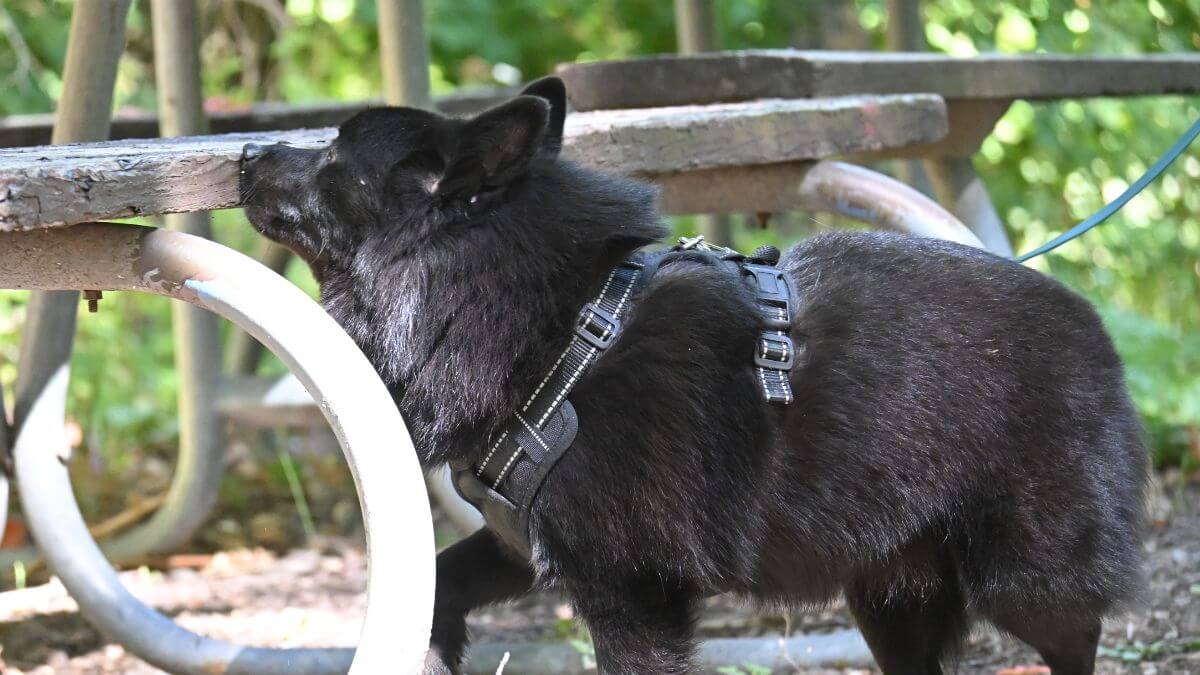
Scent Work is a versatile and inclusive sport that welcomes a wide range of dogs, each bringing its own unique abilities and traits to the activity. This adaptability is one of the sport’s greatest strengths, allowing it to cater to almost all breeds and mixed breeds, from the smallest to the largest. Dogs are able to leverage their natural scenting abilities, regardless of their particular registration. However, it’s important to acknowledge that while all dogs have a keen sense of smell, certain breeds may exhibit specific advantages or preferences in Scent Work due to their historical breeding and roles.
When considering age, Scent Work proves to be a beneficial activity for dogs at different life stages. For puppies, this sport can play a crucial role in their development. Introducing younger dogs to this activity focuses on creating fun and positive experiences, aiding in their growth and learning. On the other end of the spectrum, senior dogs can also benefit greatly from Scent Work. It offers them an opportunity to stay mentally active and engaged, with necessary adjustments that can be made to accommodate their physical comfort and capabilities.
Health and safety are paramount in Scent Work. Regular health checks ensure that the dog is physically fit and healthy for the activities involved in Scent Work. During training and competitions, maintaining a safe environment is crucial. This includes avoiding hazardous materials and making sure the dog is not overworked, thus preserving its safety and well-being.
A deep understanding of canine scent capabilities is at the foundation of Scent Work. Dogs have remarkable olfactory abilities, and recognizing and appreciating this is crucial for effective training. Since each dog’s scenting ability will vary, training should be tailored to each dog’s individual capabilities and learning pace. This personalized approach helps in maximizing every dog’s potential in Scent Work.
Finally, behavioral considerations are essential in Scent Work. Understanding and interpreting a dog’s body language and signals during scent detection is key to guiding training effectively. Additionally, recognizing signs of stress or over-excitement in dogs, and managing them appropriately, is important to ensure that the experiences in this sport are positive and enjoyable. This attention to a dog’s behavioral responses not only enhances its performance, it also strengthens the bond between the dog and its handler.
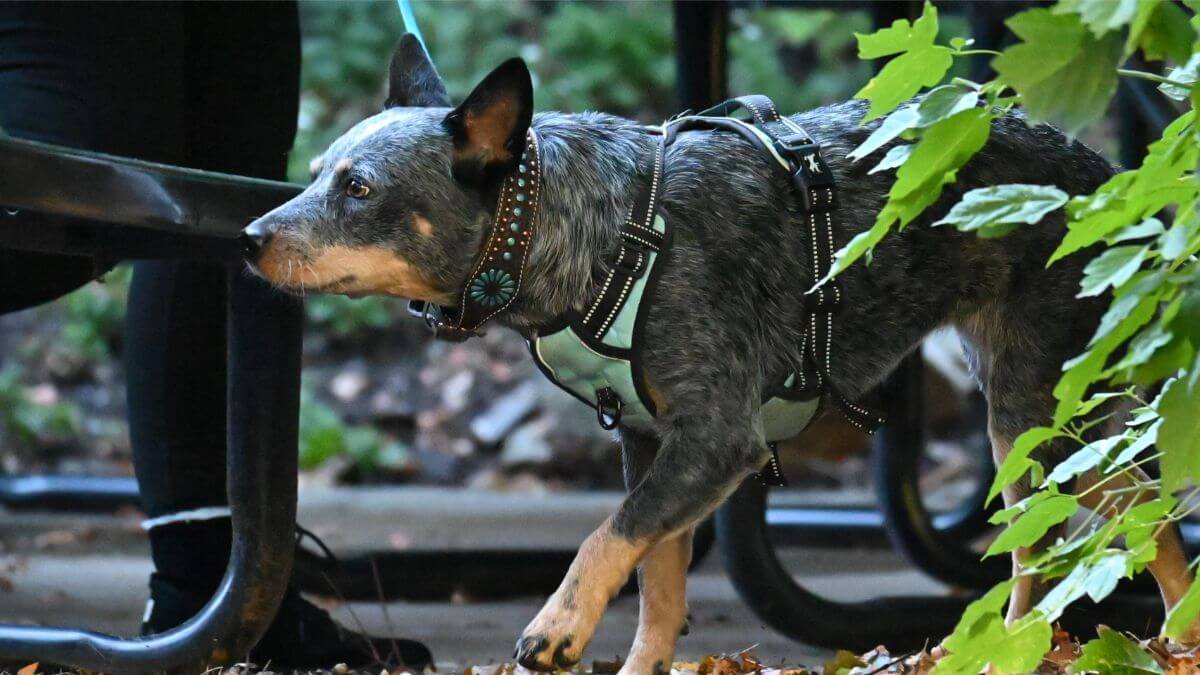
Virtual Scent Work adapts traditional scent detection activities for remote participation. It enables handlers and their dogs to engage in scent detection tasks in a familiar environment, which can be especially beneficial during times of restricted travel or social distancing.
Handlers record their dogs identifying specific scents in a controlled setup, adhering to guidelines regarding video quality and the visibility of both the dog and the scent sources. These videos are submitted for judging, with performances evaluated against established scent work criteria.
Challenges involve maintaining judging consistency and fairness across various video submissions, along with the technical aspects of video recording.
Benefits include greater accessibility for participants unable to attend physical events, comfort for dogs working in known environments, and the convenience of recording at suitable times.
Participation in Virtual Scent Work involves locating virtual events, understanding specific rules for video submissions, practicing the Scent Work tasks, and submitting the recordings for evaluation.

Scent Work Trial photos from the Bristle Nose Scent Work Club of Utah, which was held on September 22 – 24, 2023, at the Salt Lake, Utah.
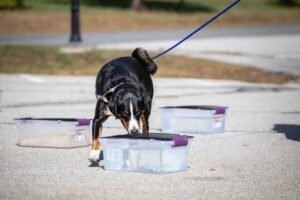
Embark on an exciting Scent Work journey with an Appenzeller Sennenhund named Vinca. Discover their trials, challenges and achievements.
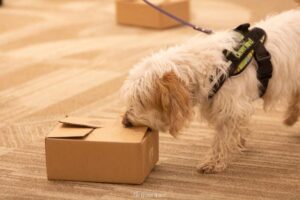
Discover the facts about a dog’s sense of smell and how it differs from ours. Learn about the nature of a dog’s nose and scent perception.
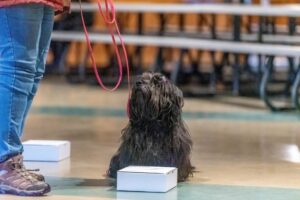
Kathleen Brodie, a Skye Terrier aficionado, shares her insights on various topics regarding dog sports and performance events.
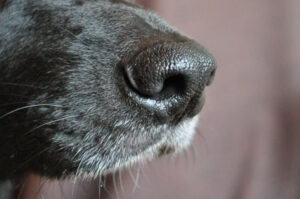
Scent Detection: Dog’s nose is working as a direction finder. I believe that a detection dog handler should understand how a dog’s nose works.
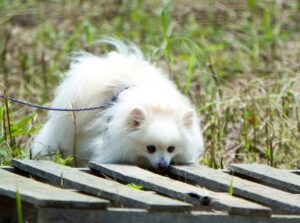
Scent Work, The Next Frontier | Bella my Pomeranian and I have done sports since she was a pup. We started when she was six months old with

"*" indicates required fields
Showsight Magazine–the world’s most influential purebred dog publication since 1992. Each issue reaches a global audience dedicated to preserving the history and health of purpose bred dogs. Filled with award-winning editorial focused on news and insights from the dog show community, top breeders, handlers, AKC Judges, and more!